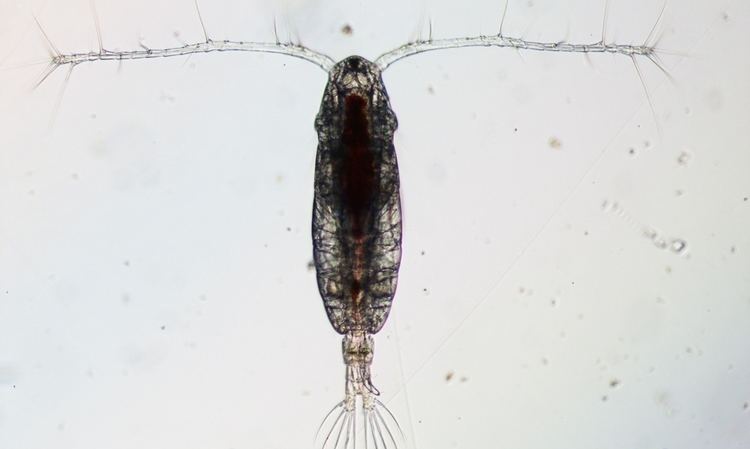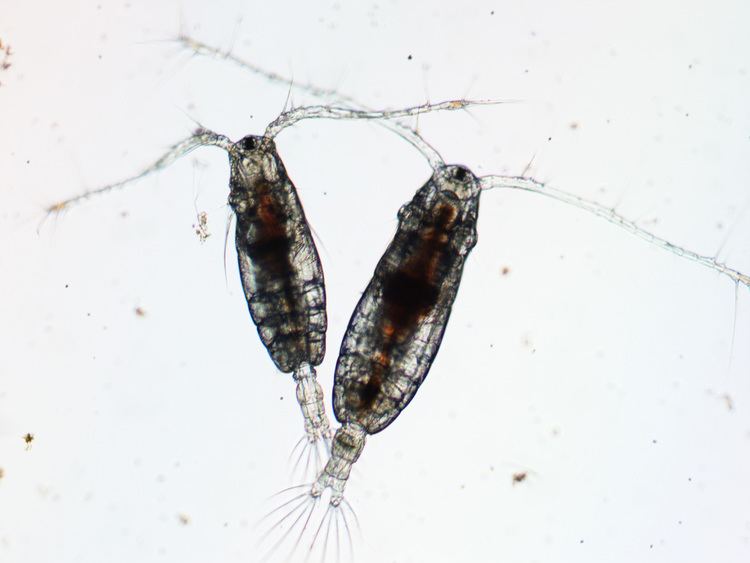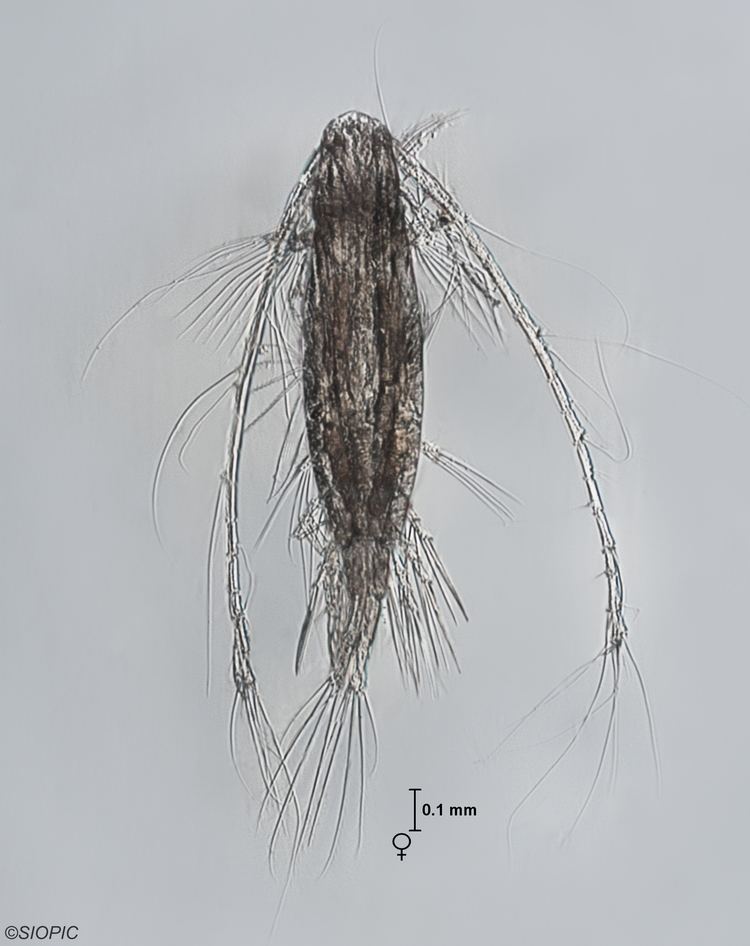Rank Genus Subclass Copepod | Scientific name Acartia | |
 | ||
Lower classifications Acartia tonsa, Acartia clausi, Acartia hudsonica, Acartia omorii, Acartia lilljeborgii | ||
Acartia tonsa copepods 11 9 13
Acartia is a genus of marine calanoid copepods. They are epipelagic, estuarine, zooplanktonic found throughout the oceans of the world, primarily in temperate regions.

Species
This genus contains the majority of species in the family Acartiidae:
Reproductive and Life Cycle
Female Acartia release eggs freely in the water. Nauplii hatch and undergo six distinct life stages to become copepodites and then undergo another six life stages to become fully mature copepods.

Some species of Arcatia are known to exhibit a diapause, a resting period when the species is dormant, as a part of their life cycle. These species produce "resting eggs" when environmental conditions are unfavorable for the development and growth of nauplii. Individual females can switch between producing resting eggs and subitaneous eggs (eggs that hatch immediately) as environmental conditions change. Resting eggs accumulate in the sediment and hatch when conditions are optimal. Production of resting eggs is driven by water temperature variations. Some species (A. hudsonica) produce resting eggs when water temperatures rise above a certain threshold, while others (A. tonsa, A. califoriensis) have been observed to produce resting eggs when water temperatures fall below a certain threshold. Hatching and development of the species occur when the water cools (A. hudonica) or warms (A. tonsa, A. califoriensis). Additionally, A. califoriensis is known to be adapted to anomalous water temperature variations. Hatching is only followed by a period of steady water temperatures in the favorable range. This ensures that a generation of the species isn't killed off by a momentary warming followed again by colder temperatures.

Feeding
Arcatia primarily feed on phytoplankton and are also known to consume rotifers, ciliates, and their own eggs and nauplii.

Arcatia feeding patterns are asymptotic relative to the abundance of food. When food is widely abundant Arcatia approach a maximum food intake. When there is less food available, feeding adjusts to rates that correlate with food availability.

Predation Effects
In a study of A. tonsa in the Narragansett Bay the species was found to exhibit a diel feeding pattern, that is, a night feeding pattern. The diel feeding cycle was tested under a variety of light conditions and was found to be endogenous, not related to light availability, but persistent regardless of whether the copepods were subjected to light or dark. This feeding pattern is only known to be disrupted at extremely low food levels implying that either “food limitation has over-ridden other factors governing diel feeding rhythms and induced continuous feeding, or that a synchronized population-wide feeding rhythm has given way to intermittent, asynchronous feeding among individuals.”

Arcatia are also known to exhibit a diel vertical migration pattern, swimming to depths during the day and rising to surface waters at night. The diel vertical migration of A. tonsa was seen to be effected by light exposure: when exposed to continuous light the copepods did not migrate to the surface.
Both diel patterns are thought to be primarily adaptive behavior to avoid visual predators. The mechanism of the diel vertical migration of Arcatia has been explored further to solve the question of if the copepods react to chemical signals indicating the presence of predators, physical stimulii resulting from the movement of predator fish in the water, or visual cues based on the changing light modified by a much larger predator. In a study of A. hudsonica, the chemical response was ruled out. Additionally, other studies of Arcatia (A. longiremis, A. grani and A. discandata) were found to have less chemoreceptors and more mechanoreceptive sensory hairs than other marine copepods, suggesting that diel feeding and migration patterns in Arcatia are primarily driven by physical and visual cues.
References
